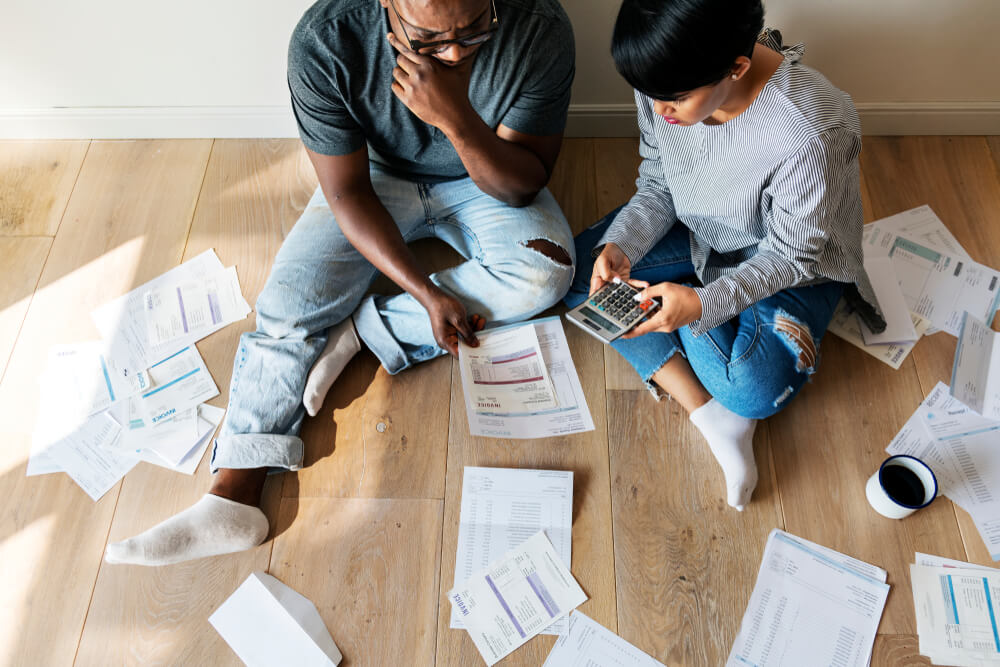Key Points
- There are 5 steps to filing for bankruptcy in Ontario
- Step One: Contact a Licensed Insolvency Trustee (LIT)
- Step Two: Gather your creditor, asset and income information and meet with the Trustee (LIT)
- Step Three: Sign the documents and an affidavit (LIT)
- Step Four: The Trustee will file the paperwork with the Office of the Superintendent of Bankruptcy of Canada (LIT)
- Step Five: Make your payments and attend your mandatory counselling sessions to receive a discharge from bankruptcy (LIT)
- Four common myths about bankruptcy in Ontario
There are 5 steps to filing for bankruptcy in Ontario
Deciding to file for bankruptcy is a big decision. If you’ve weighed your options and have decided to file for bankruptcy in Ontario, you should know there are five steps you’ll need to follow.
- Contact a Licensed Insolvency Trustee (LIT)
- Gather your creditor, asset and income information and meet with the Trustee
- Sign the documents and an affidavit
- The Trustee will file the paperwork with the Office of the Superintendent of Bankruptcy of Canada
- Make your payments and attend your mandatory credit counselling sessions to receive a discharge from bankruptcy
Step One: Contact a Licensed Insolvency Trustee (LIT)
The first step in filing for personal or corporate bankruptcy in Ontario is to contact a Licensed Insolvency Trustee, such as Harris & Partners. Licensed Insolvency Trustees, or LITs, are the only professionals authorized to administer bankruptcies and consumer proposals, which are government-regulated insolvency proceedings that allow you to be discharged from your debt.
Unlike non-LITs, there are no upfront costs and no hidden fees. Be sure that when you are getting advice, the person is Licensed.
LITs help people make informed choices to deal with their financial difficulties and deal directly with creditors on your behalf. They are also federally regulated, which means they must adhere to federal standards of practice and codes of ethics.
Once you’ve contacted an LIT, unsecured creditors cannot continue to or initiate any collection action or legal proceeding against you.
The main thing to remember is to only contact Licensed Trustees. Do not be fooled by people offering this service that are non-licensed, as they will take a fee from you and then simply refer you to a Licensed Insolvency Trustee. The fees charged by an LIT for consumer insolvencies are regulated by the federal government. Typically, LITs do not charge for the first consultation.
Step Two: Gather your creditor, asset and income information and meet with the Trustee (LIT)
Gather all your creditor, asset and income information. You’ll need things like letters from debt collectors, credit card statements, deeds to any property you own, mortgage statements, pay stubs and bank statements.
Once you have gathered this you can bring it to a Licensed Insolvency Trustee that will explain to you your options, whether it be bankruptcy, a consumer proposal or another alternative. Sometimes, a consumer proposal is in fact the best option so it is important to stay open-minded to the Trustee’s thoughts and work together to find the right solution for your situation. Read our guide explaining what is a consumer proposal.
Read our guide – Can I keep my house and car if I go bankrupt?
Step Three: Sign the documents and an affidavit (LIT)
After meeting the Trustee, he or she will prepare the documents related to the bankruptcy. When you’re ready to sign the documents and swear an affidavit that the statement of affairs (all information related to your income, assets and debts) is true, the Trustee will walk you through the documents and explain to you the significance of each.
Step Four: The Trustee will file the paperwork with the Office of the Superintendent of Bankruptcy of Canada (LIT)
After signing the documents, the Trustee will file the documents with the Office of the Superintendent of Bankruptcy of Canada and you will officially be bankrupt.
Upon bankruptcy, a stay of proceedings will be in place which protects you from being harassed by your creditors.
Step Five: Make your payments and attend your mandatory counselling sessions to receive a discharge from bankruptcy (LIT)
After you complete all of your obligations of bankruptcy, you will receive your discharge and all of the debts included in the bankruptcy will be gone. You can now start to rebuild credit by using resources like RRSP loans and secured credit cards. Be sure to get a credit report to ensure everything is correct and hold on tight to your discharge paper as that will be your evidence of completion of the bankruptcy. Learn more about how to rebuild credit after a bankruptcy.
Four common myths about bankruptcy in Ontario
Debts can be overwhelming and can leave you feeling like there’s nothing left to do. While declaring bankruptcy should never be your first solution to getting out of debt, it is a viable way to help you out financially if you’re in over your head.
Before you decide that bankruptcy is the answer to your problems, make sure you understand the myths and misconceptions about filing for bankruptcy.
-
Bankruptcy is the only option
Bankruptcy may be the answer to your problem, but before determining that, it is important that you make yourself aware of other alternatives.
Consider contacting a federally Licensed Insolvency Trustee who can help you to work on your money management skills. Or look at the possibility of a Consumer Proposal as an alternative, which will help manage any surplus obligations, repurchase assets like your house and ultimately be better for your credit rating.
Remember that bankruptcy is not your only option and may not be the best decision for your financial situation.
-
Bankruptcy will solve all your problems
While declaring bankruptcy will eliminate most of your debt, end phone calls from debt collectors and stop collection actions and garnishments, it will not solve all your problems if you don’t make changes to your financial habits. Many people find themselves back in the same situation many years after declaring bankruptcy. In fact, according to Bankruptcy Canada, approximately 10% of all bankruptcies are for individuals who have needed to file bankruptcy more than once.
Bankruptcy essentially gives you a second chance, but what you do with that second chance is up to you. During the bankruptcy process, you will usually receive financial counselling, which gives you the tools needed to succeed and helps you examine possible lifestyle changes so that you don’t fall back into old bad habits and the recurring cycle of debt.
-
You will lose everything
Filing for bankruptcy is a big step and should not be taken without serious consideration. You are allowed various exemptions up to certain limits to keep furniture, personal effects and a motorized vehicle (car).
Your biggest asset and concern is generally your home. The Trustee will try and work with you to develop a buy-back plan for the excess equity above the exemption limit that works for both you and your creditors. In some cases, during your discussions with the Trustee, you may come to the conclusion that it is not possible or wise to keep the house and voluntarily surrender it in order to be financially secure in the future. Read more about keeping your house and car during bankruptcy.
-
Filing for bankruptcy is free
Despite what some people might think, filing for bankruptcy is not free. There is a cost to bankruptcy that is set based on federal regulations. How much does bankruptcy cost? Well, it depends on your total household income, the number of people in your household, and the equity you hold in non-exempt assets as set out by the government.
After you file for bankruptcy in Canada, you are allowed to keep a portion of your income each month. If you earn over the limit, you are required by law to contribute half of that surplus income to your bankruptcy estate, which is then distributed to your creditors.
For example, if a family of four brings in a total of $5000 net per month (after tax is paid), their surplus income in 2018 would be $1,002, and so they would owe $501 to their creditors each month.
| Family Size | Limit* |
| 1 | $2,152 |
| 2 | $2,679 |
| 3 | $3,293 |
| 4 | $3,998 |
| 5 | $4,535 |
| 6 | $5,114 |
| 7 | $5,694 |
*These numbers change annually. Please speak to a LIT to get the latest exemption limit.
Your Trustee will calculate your surplus income obligation for you. A first time bankrupt with a surplus income will make these payments for 21 months. A first time bankrupt with no surplus is obligated to pay the Trustee’s fee and will be bankrupt for 9 months.
For a second time bankrupt without surplus income, the period is 24 months, while with surplus income is 36 months. Any time bankruptcy is filed more than twice it is 36 months regardless of whether or not you have surplus income.
As a result of this math being dynamically based on your household income, it is best that you reach out to a LIT to ask all of your questions and look at all available options because sometimes a consumer proposal will be a better alternative for you.
While filing for bankruptcy in Ontario is serious business, it does not have to be a traumatizing experience. Make sure you are able to get all the facts before you jump to conclusions about your financial situation. With our 35+ years of experience, we’re confident we can answer your tough questions and help you through them. Should you have any questions about bankruptcy, feel free to reach out to our helpful staff in any of our 11 convenient locations.












